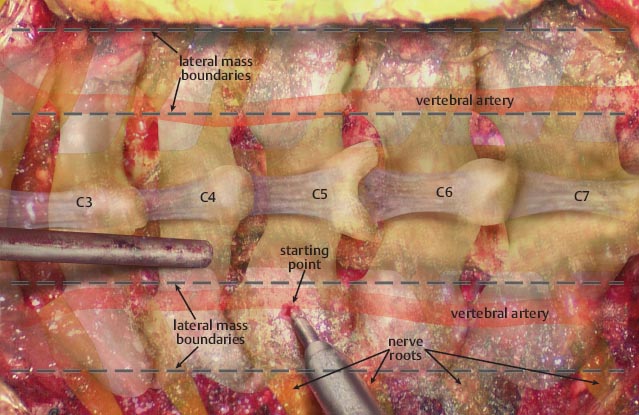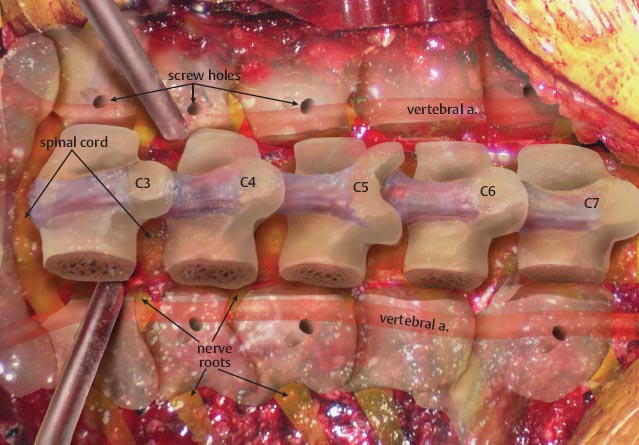• A midline posterior approach is utilized, with dissection performed through the avascular ligamentum nuchae.
• Subperiosteal exposure is performed, extending out to the lateral edge of the lateral mass.
– Bleeding is typically encountered along the lateral edge of the lateral mass.
– This bleeding can be controlled with bipolar cautery.

• The lateral mass is exposed and clearly defined, exposing the superior, inferior, and medial lateral borders.

• Once the lateral mass is defined, the starting point should be created with a high-speed burr.
– The center of the lateral mass is burred first.
– The drill is then directed 20° cephalad and lateral, thereby avoiding the vertebral artery and nerve root.

• Once the lateral mass screw holes are created, a laminectomy can be performed.
– Two troughs are created with a high-speed burr.
– The troughs are created just medial to the screw start points at the junction of the lateral mass and lamina.

Stay updated, free articles. Join our Telegram channel

Full access? Get Clinical Tree








